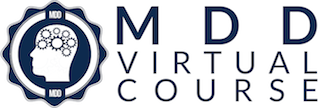ArcheMedX and the New Jersey Academy of Family Physicians Announce the Launch of the First Accredited Virtual Course
Selected family physicians and patient-centered medical home teams can now participate in an eight-week virtual course, with some activities accredited for AAFP Prescribed credit, on the Treatment of Major Depressive Disorder.
Charlottesville, VA (PRWEB) February 20, 2014
ArcheMedX and the New Jersey Academy of Family Physicians (NJAFP) launched the first ever virtual course, with educational elements accredited with AAFP Prescribed credit, for family physicians this week in collaboration with seven state chapters of the American Academy of Family Physicians (AAFP). The eight-week course offers members of each participating state chapter an entirely new way of connecting learning to practice as they dive deeper into the “Treatment of Major Depressive Disorder” through a curriculum of self-directed lessons and collaborative learning activities that recreate the critical elements of small, problem-based workshops in a secure, online setting.
As Ray Saputelli, EVP/CEO at NJAFP explains, “We are thrilled to announce the launch of the MDD Virtual Course and believe it signifies a turning point in the way continuing education can and should be delivered to clinicians, especially family physicians who are constantly challenged to balance their limited time with providing the highest quality care and staying up to date on the latest best practices. By partnering with ArcheMedX to design and deliver this virtual course, we have created a far simpler and more engaging way for primary care teams to acquire new knowledge and apply critical lessons to practice.”
The MDD Virtual Course powered by the ArcheCourse enables faculty to deliver a flexible curriculum of weekly video-, slide-, discussion-, self-assessment-, and case-based lessons; collaborative exercises; and self-directed learning activities to small, trusted cohorts of learners. The ArcheCourse also makes it simple for faculty to communicate with and engage cohorts and individual learners, and the administrative dashboard provides access to learning data in real-time so faculty can immediately assess course effectiveness and utilize lesson tools to direct individual learners to engage more actively or to focus on areas where they need more support.
Learners participating in an ArcheCourse can track their progress as they engage in accredited CME activities and collaborative learning exercises, communicate with faculty, and learn from each other within a safe, secure, and private virtual classroom. As they participate in accredited lessons and learning activities each participant can access learning tools to:
- take, sync, share, and archive their own notes;
- set personal reminders that will be delivered via a spaced-based reminder system to maximize recall and action;
- discuss planned content and learning activities with faculty and classmates;
- and quickly search through relevant resources (i.e., journal articles, clinical studies, patient education tools, etc.) that have been carefully selected by faculty.
Recent data suggest that the majority of clinicians are using new social technologies for the express purpose of lifelong learning and professional development. These findings along with a growing body of literature evaluating the impact of new learning technologies in medical education provided a robust body of evidence that was leveraged to develop the educational design for the Major Depressive Disorder Virtual Course, the first in a series of accredited, collaborative learning initiatives delivered by NJAFP and ArcheMedX.
According to Brian S. McGowan, PhD, Co-Founder and Chief Learning Officer at ArcheMedX, “The launch of our first virtual course with NJAFP is the first step in the transformation of team-based and inter-professional learning, which is essential as greater coordination of care is required across the healthcare system.” Dr. McGowan adds, “The ArcheCourse provides the best of ‘small, group based learning formats’ in a secure and trusted online model and by working with NJAFP we are bringing together primary care physicians and primary care teams to learn collaboratively in a simpler and more efficient manner.”
Each participating state chapter will activate their own classroom within the virtual course following a one-hour live faculty led session held at participating state chapter meetings. To learn more about the virtual course and how your state chapter and members can participate, please contact Ray Saputelli, Executive Vice President of the New Jersey Academy of Family Physicians. For more information about ArcheCourse and the connected learning solutions provided by ArcheMedX, please contact Joel Selzer, CEO of ArcheMedX, or visit https://archemedxinc.wpengine.com.
—
About ArcheMedX
ArcheMedX is a healthcare informatics and e‐learning technology company with the singular mission to build the structure required to transform medical education through new connected learning and assessment models. By engineering an informatics‐powered architecture that organizes and connects the natural learning actions of clinicians in one system, ArcheMedX simplifies lifelong learning and streamlines the process of educational planning, assessment and support. Visit https://archemedxinc.wpengine.com for more information.
About New Jersey Academy of Family Physicians (NJAFP)
The NJAFP has been advancing the cause of family physicians and their patients for over 50 years. With over 2000 members, including active practicing family physicians, residents in family medicine, and medical students interested in the specialty, the NJAFP is the largest primary care medical society in the state and a chapter of the American Academy of Family Physicians. Our mission is to promote excellence in the standards and practice of Family Medicine to benefit the citizens of the state of New Jersey. Membership in the NJAFP guarantees career-long resources and support that will keep Family Physicians on the cutting edge of patient care. Visit http://www.njafp.org for more information.









